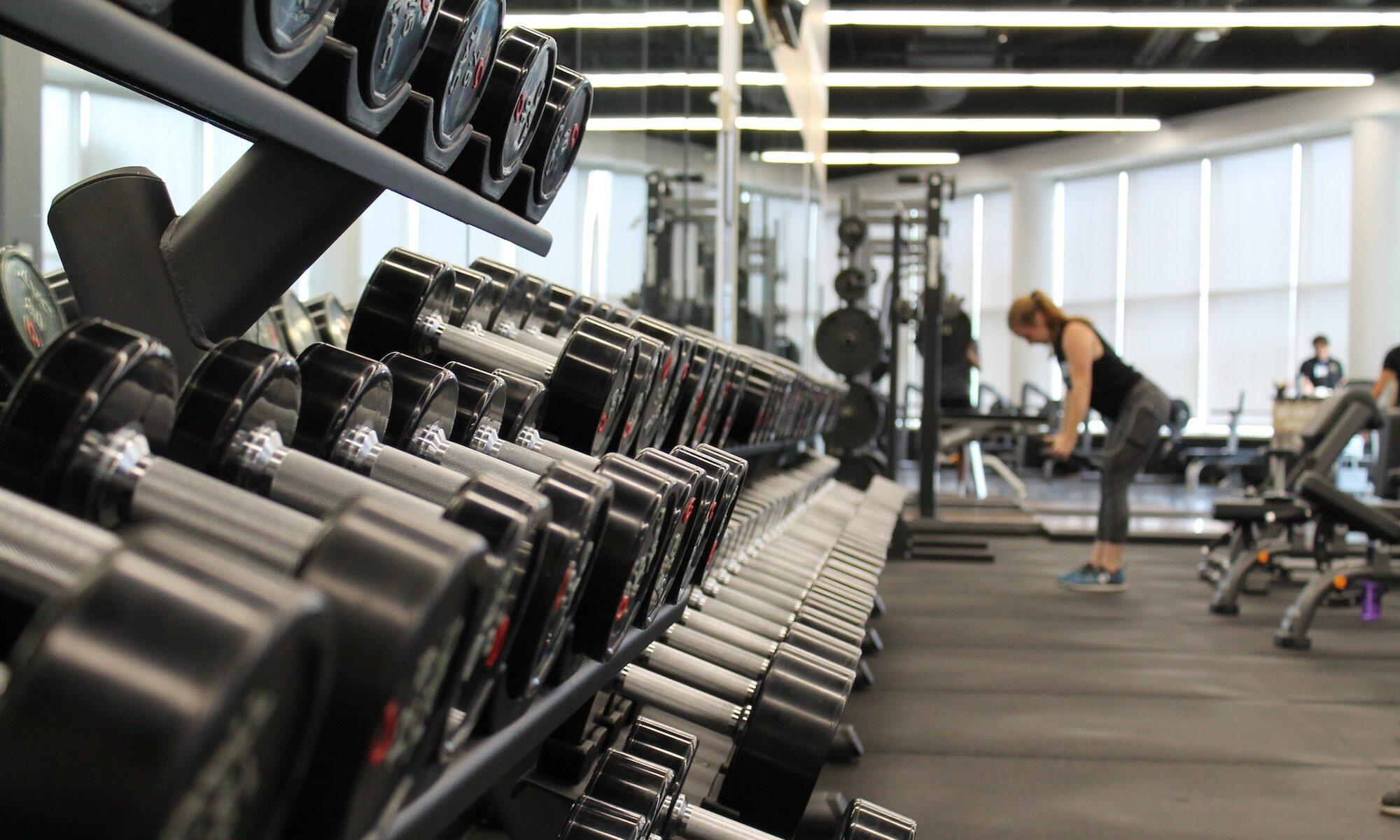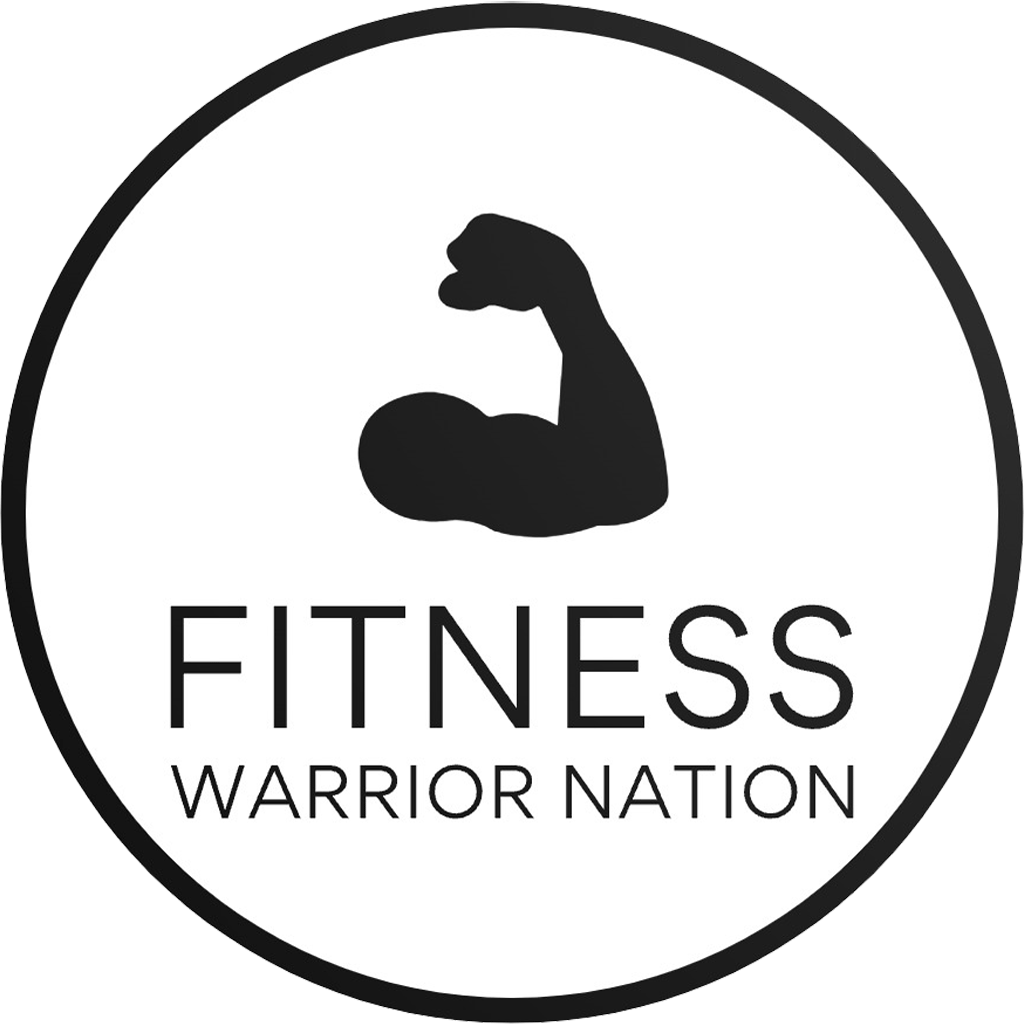Discover the benefits of powerful core workouts for a stronger, balanced body. Improve stability, posture, athletic performance, and reduce the risk of injury.
If you’re looking to take your fitness to the next level, it might be time to turn your attention to your core. Many fitness enthusiasts and experts alike believe that powerful core workouts hold the key to unlocking a stronger, more balanced body. By targeting the muscles in your abdomen, back, and pelvis, these workouts not only help improve your overall stability and posture, but they can also enhance your athletic performance and reduce the risk of injury. So whether you’re a seasoned athlete or just starting your fitness journey, discovering the benefits of powerful core workouts could be a game-changer for your body.
Benefits of Core Workouts
Improved posture
Having a strong core is essential for maintaining good posture. Core workouts help strengthen the muscles in your abdomen, back, and pelvis, which play a significant role in supporting your spine. When these muscles are weak, it can lead to poor posture, causing slouching and putting strain on your spine. By incorporating core exercises into your routine, you can improve your posture and reduce the risk of developing back pain.
Increased stability
When you have a strong core, you’ll notice improved stability in your daily activities. Whether you’re carrying groceries, playing sports, or walking on uneven terrain, a strong core provides a solid foundation for your movements. It allows you to maintain balance and stability, reducing the risk of falls and injuries.
Enhanced athletic performance
Many athletes understand the importance of a strong core when it comes to improving their performance. Whether you’re a runner, a tennis player, or a weightlifter, a strong core is essential for generating power and transferring force from your lower body to your upper body. By incorporating core workouts into your training routine, you can enhance your overall athletic performance and reach your full potential.
Reduced risk of injury
One of the significant benefits of core workouts is their ability to reduce the risk of injury. When your core muscles are strong, they provide stability and support to your spine and pelvis, reducing the strain on other muscles and joints. This can help prevent common injuries, such as muscle strains and sprains, as well as more severe injuries caused by overloading weak muscles. By regularly engaging in core exercises, you can strengthen your muscles and protect yourself from potential injuries.
Better balance and coordination
Core workouts are excellent for improving balance and coordination. When your core muscles are strong, they help stabilize your body and maintain proper alignment, even during dynamic movements. This enhanced stability allows you to move more efficiently and react quickly to changes, improving your overall balance and coordination. Whether you’re an individual who enjoys yoga, dancing, or any other activity that requires balance, incorporating core workouts into your routine can help you become more agile and perform better.
Effective Core Exercises
Planks
Planks are one of the most effective exercises for strengthening your core. To perform a plank, start by getting into a push-up position, resting on your forearms instead of your hands. Engage your core muscles, keeping your body in a straight line from your head to your heels. Hold this position for as long as you can, gradually increasing your time as your core strength improves. Planks engage multiple muscles in your core, including your rectus abdominis, obliques, and transverse abdominis.
Russian twists
Russian twists are another great exercise that targets your obliques and improves your rotational strength. To perform Russian twists, start by sitting on the ground with your knees bent and your feet flat on the floor. Lean back slightly and lift your feet off the ground, balancing on your glutes. Hold your hands together in front of you or hold a weight for added resistance. Twist your torso to one side, touching the ground beside you, and then twist to the other side. Repeat this motion for the desired number of repetitions.
Deadbugs
Deadbugs are a fantastic exercise for strengthening your deep abdominal muscles, as well as improving your coordination. To perform deadbugs, lie on your back with your arms extended straight above your shoulders and your knees bent at a 90-degree angle. Engage your core muscles and lower one arm and the opposite leg towards the floor, keeping them just above the ground. Return to the starting position and repeat on the other side. Focus on maintaining stability and avoiding any movement in your lower back.
Mountain climbers
Mountain climbers are a dynamic exercise that engages multiple muscle groups, including your core. To perform mountain climbers, start in a high plank position with your hands directly beneath your shoulders. Engage your core and bring one knee towards your chest, then quickly switch legs, bringing the opposite knee towards your chest while extending the other leg back. Keep alternating legs at a quick pace, as if you’re running in place. This exercise not only targets your core but also increases your heart rate, making it a great cardiovascular exercise as well.
Bicycle crunches
Bicycle crunches are a classic core exercise that targets both your rectus abdominis and obliques. To perform bicycle crunches, lie on your back with your hands behind your head and your legs lifted, knees bent at a 90-degree angle. Engage your core and lift your upper body off the ground, simultaneously bringing one elbow towards the opposite knee while extending the other leg out straight. Alternate sides, mimicking a cycling motion. Focus on rotating your torso and fully extending your leg to engage your core muscles effectively.
Engaging Multiple Muscles
Rectus abdominis
The rectus abdominis, commonly known as the “six-pack” muscles, is the most well-known muscle in the core. It runs vertically down the front of your abdomen and is responsible for flexing your trunk, such as when you perform a sit-up. Engaging the rectus abdominis helps develop a strong and aesthetic-looking core.
Obliques
The obliques are located on the sides of your abdomen, and there are both internal and external obliques. These muscles are responsible for rotation and side-bending motions of the trunk. Strengthening your obliques not only improves your overall core strength but also enhances your rotational power and stability in various activities.
Transverse abdominis
The transverse abdominis, often referred to as the deep core muscle, plays a crucial role in core stability. It wraps around the sides of your abdomen, acting as a corset and providing support to your spine and pelvis. Engaging the transverse abdominis helps improve overall core stability and protect against lower back pain.
Multifidus
The multifidus is a deep back muscle that runs along the spine. It plays a vital role in stabilizing the spine and maintaining proper alignment. Strengthening the multifidus can help prevent back pain and improve overall spinal health.
Erector spinae
The erector spinae is a group of muscles that run alongside and support the spine. These muscles help with extending the back and maintaining an upright posture. Engaging the erector spinae helps improve back strength and stability, reducing the risk of back injuries.
Targeting Deep Abdominal Muscles
Importance of deep abdominal muscles
While it’s important to strengthen the superficial muscles of the core, such as the rectus abdominis and obliques, it’s equally crucial to target the deep abdominal muscles. The deep abdominal muscles, including the transverse abdominis, multifidus, and pelvic floor muscles, provide essential support and stability to the spine and pelvis. By strengthening these muscles, you can improve your posture, reduce the risk of back pain, and enhance overall core strength.
Exercises to activate deep abdominal muscles
To effectively target the deep abdominal muscles, it’s necessary to engage in exercises that require stability and activation of the core. Examples of such exercises include planks, deadbugs, bird dogs, and supine marching. These exercises focus on maintaining a neutral spine and engaging the deep abdominal muscles throughout the movement.
Benefits of targeting deep abdominal muscles
Targeting the deep abdominal muscles offers numerous benefits. One of the main advantages is improved spinal stability and reduced risk of back pain. By strengthening the deep core muscles, you can better support your spine, maintain proper alignment, and alleviate stress on the lower back. Additionally, targeting the deep abdominal muscles can enhance overall core strength and improve functional movement patterns, allowing you to perform daily activities with more ease and efficiency.
Core Workouts for Different Fitness Levels
Beginner core workouts
If you’re new to core workouts or have limited experience with exercise, it’s important to start with beginner-friendly exercises. Begin with exercises such as modified planks, knee push-ups, toe touches, and seated Russian twists. These exercises focus on developing core strength while providing proper support and minimizing the risk of injury. As you gradually build strength and improve your fitness level, you can progress to more challenging exercises.
Intermediate core workouts
For individuals with some experience in core training, intermediate workouts offer a more challenging and diverse range of exercises. Incorporate exercises like full planks, push-ups, mountain climbers, bicycle crunches, and side planks into your routine. These exercises target multiple muscles in the core and require greater stability and control.
Advanced core workouts
Advanced core workouts are suitable for those who have a strong foundation of core strength and are looking to take their fitness to the next level. These workouts include exercises such as advanced variations of planks (e.g., plank with leg lifts or side plank with arm reach), V-ups, hanging leg raises, and dragon flags. These exercises require a high level of core strength, stability, and overall fitness.
Incorporating Core Workouts into your Fitness Routine
Determining frequency and duration of core workouts
The frequency and duration of your core workouts will depend on your fitness goals, current fitness level, and overall workout routine. As a general guideline, aim to incorporate core workouts into your routine 2-3 times per week. Start with shorter sessions, around 15-20 minutes, and gradually increase the duration as your core strength improves. Remember, allowing adequate rest and recovery time between workouts is essential for muscle growth and preventing overuse injuries.
Combining core workouts with other exercises
To maximize the effectiveness of your core workouts, it’s beneficial to combine them with other exercises that target different muscle groups. For example, pairing core exercises with upper body exercises like push-ups or pull-ups, or lower body exercises like squats or lunges, creates a well-rounded workout that engages multiple muscles and enhances overall strength. This approach not only saves time but also provides a more comprehensive training stimulus for your entire body.
Progressing and varying core exercises
To continue challenging your core muscles and avoiding plateaus, it’s crucial to progress and vary your core exercises over time. Consider increasing the difficulty of exercises by adding more resistance, using stability equipment like Swiss balls or resistance bands, or performing advanced variations of exercises. It’s also essential to vary the types of core exercises you include in your routine to target different muscles and prevent overuse injuries. Experiment with different exercise modalities and explore new movements to keep your core workouts engaging and effective.
Common Mistakes during Core Workouts
Poor form and technique
One of the most common mistakes people make during core workouts is using poor form and technique. Improper form not only reduces the effectiveness of the exercise but also increases the risk of injury. To avoid this, it’s important to focus on maintaining proper alignment, engaging the correct muscles, and performing each exercise with control. If you’re unsure about the correct form, consider consulting a professional or watching instructional videos to ensure you’re performing the exercises correctly.
Neglecting the back muscles
While core workouts primarily target the muscles in the abdomen and pelvis, it’s crucial not to neglect the muscles in the back. Neglecting the back muscles can create muscular imbalances and increase the risk of injury. Make sure to incorporate exercises that target the back muscles, such as supermans, lat pull-downs, or rows, into your core workout routine. Balancing the strength of the core and back muscles is essential for maintaining overall spinal health and stability.
Overtraining the core
Another mistake that people often make is overtraining the core. While it’s important to engage in regular core workouts, it’s equally important to allow adequate rest and recovery time for your muscles to repair and grow. Overtraining the core can lead to muscle fatigue, decreased performance, and increased risk of injury. Listen to your body and give yourself at least 48 hours of rest between intense core workouts to allow sufficient recovery.
Lack of progression
Many individuals fail to progress their core workouts over time, leading to minimal improvements in strength and performance. To continue challenging your core muscles and stimulating growth, it’s essential to progressively increase the difficulty of your exercises or add additional resistance. Gradually increase the number of repetitions, hold times, or sets, or introduce more challenging variations of exercises. Without progression, your core muscles may adapt to the current workload and prevent further strength gains.
The Role of Nutrition in Core Strength
Importance of a balanced diet
Nutrition plays a vital role in overall health and fitness, including core strength. To support your core workouts and promote muscle growth, it’s important to maintain a balanced diet that includes a variety of nutrient-dense foods. Focus on consuming protein, carbohydrates, healthy fats, and a wide range of vitamins and minerals. A well-rounded diet provides the necessary fuel and building blocks for muscle recovery and growth.
Incorporating protein for muscle recovery and growth
Protein is an essential nutrient for muscle repair, recovery, and growth. When engaging in core workouts, it’s important to consume adequate protein to support your muscle tissue. Include good sources of protein in your diet, such as lean meats, fish, poultry, eggs, dairy products, legumes, and plant-based proteins like tofu or tempeh. Aim to distribute your protein intake evenly throughout the day to optimize muscle protein synthesis.
Hydration for optimal performance
Staying hydrated is crucial for optimal performance during core workouts and overall health. Water is essential for maintaining proper bodily functions, including muscle contractions and lubrication of joints. Adequate hydration also helps prevent muscle cramps and fatigue, allowing you to perform at your best. Make sure to drink water before, during, and after your workouts, and listen to your body’s thirst cues to ensure you’re adequately hydrated.
Injury Prevention and Core Strength
Core strength and lower back pain
Lower back pain is a common issue that many people experience due to weak core muscles. When the muscles in your core are weak, it can lead to poor posture, increased stress on the lower back, and a higher risk of injury. By improving your core strength, you can alleviate lower back pain and prevent future episodes. Strong core muscles provide stability and support to your spine, reducing the strain on your lower back and promoting proper alignment.
Preventing common injuries with core workouts
Engaging in regular core workouts can help prevent common injuries, particularly those related to poor posture or muscular imbalances. Strengthening your core muscles helps maintain proper alignment, reduces strain on other muscles and joints, and improves overall stability. By incorporating core exercises into your routine, you can enhance your body’s ability to withstand physical stress and reduce the risk of muscle strains, sprains, and other common injuries.
Correcting muscular imbalances
Muscular imbalances occur when certain muscles in your body are stronger or weaker than their opposing muscles. This imbalance can lead to poor movement patterns, joint instability, and increased risk of injury. Core workouts can be instrumental in correcting muscular imbalances by targeting specific muscle groups and creating balance in your body. By strengthening weak muscles and improving overall core strength, you can improve your posture, movement mechanics, and prevent injuries caused by imbalances.
Consulting a Professional
Seeking guidance from a certified trainer or physical therapist
If you’re unsure how to properly perform core exercises or want to develop a personalized core workout plan, it may be beneficial to seek guidance from a certified trainer or physical therapist. These professionals can assess your individual needs, design a safe and effective core workout plan, and provide guidance on proper form and technique. They can also monitor your progress and make necessary adjustments to ensure you’re on track to reach your fitness goals.
Individualized core workout plans
Every individual is different, and their core workout needs may vary. An individualized core workout plan takes into account your specific goals, fitness level, and any existing injuries or limitations. A certified trainer or physical therapist can help create a customized plan that addresses your unique needs, ensuring that you’re targeting the right muscles, progressing appropriately, and minimizing the risk of injury.
Avoiding injury through proper form
Proper form is essential during core workouts to maximize the benefits and prevent injury. A certified trainer or physical therapist can teach you the correct form and technique for each exercise, ensuring that you’re engaging the right muscles and minimizing stress on other structures. They can provide real-time feedback, correct any issues, and help you develop good exercise habits that will carry over to other aspects of your fitness routine. Investing in proper form instruction can significantly reduce the risk of injury and improve the effectiveness of your core workouts.
In conclusion, powerful core workouts offer numerous benefits, including improved posture, increased stability, enhanced athletic performance, reduced risk of injury, and better balance and coordination. By incorporating effective core exercises that engage multiple muscles and targeting the deep abdominal muscles, you can strengthen your core and experience these benefits. Core workouts should be tailored to different fitness levels, and it’s crucial to consider the frequency, duration, and progression of your workouts. Additionally, paying attention to nutrition, injury prevention, and seeking professional guidance can further enhance and support your core strength journey. So, why wait? Start integrating core workouts into your fitness routine today and unlock the potential of a stronger and more resilient body.


